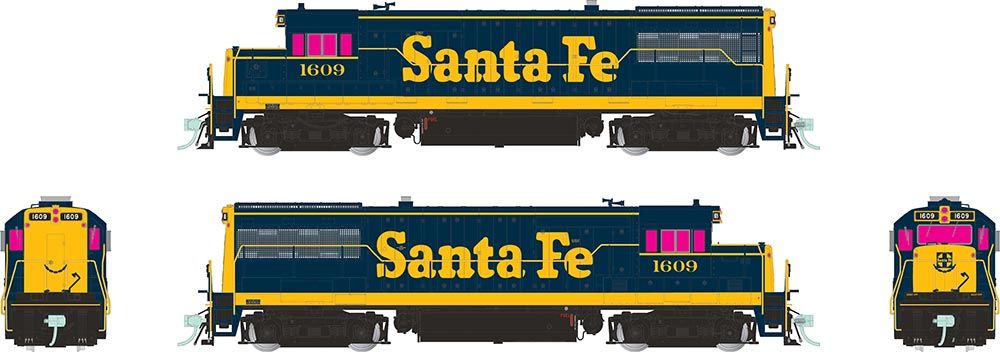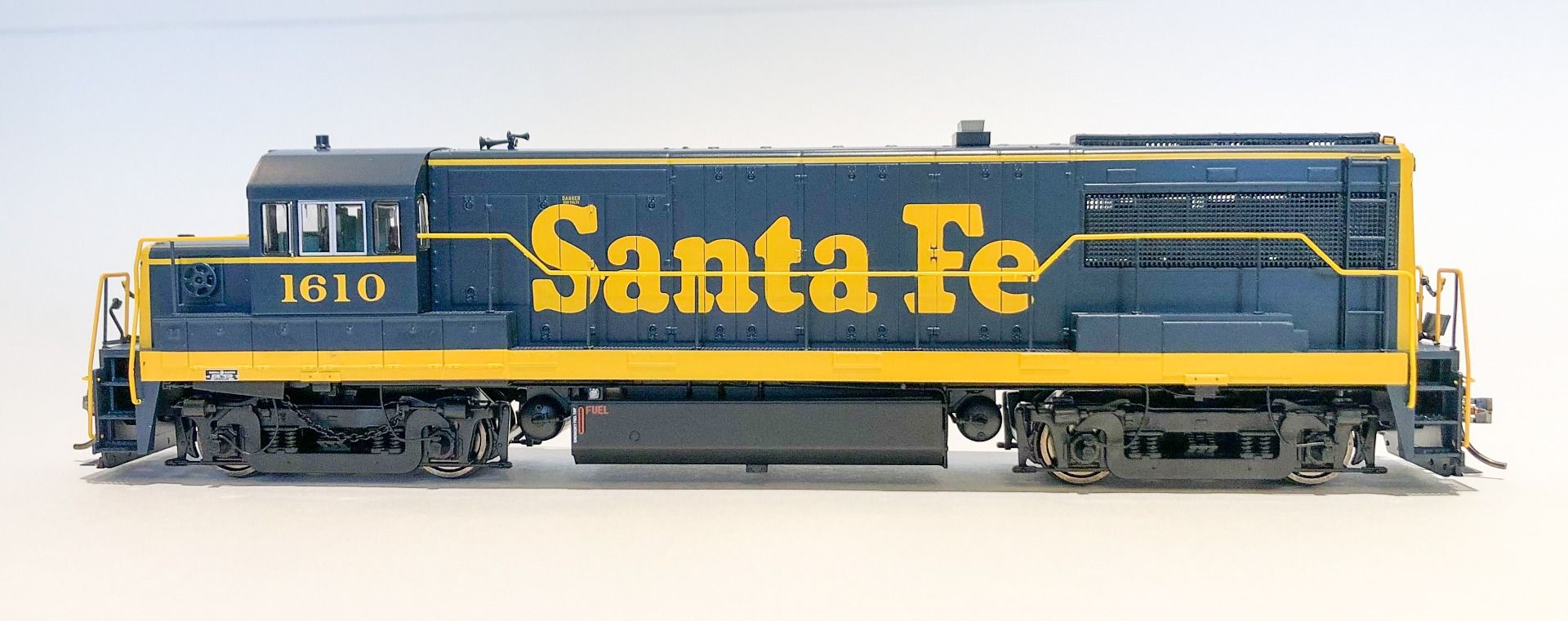The Rapido 35506 is an HO scale GE U25B Low Hood locomotive representing ATSF Santa Fe #1610, equipped with LokSound and DCC. Note that the picture might show a different road number. This locomotive offers many unique features. In the first run, it represents Phase I, II & III units, with Phase IV and other units coming in future runs. It has a single front window style for low nose units, and a double front window is planned for future runs. There are both low- and high-short hood versions, along with early high- and later-low style side doors. Each model has road-specific details, different exhaust stacks based on the roadname, road-specific battery box doors on the engineer’s side, and road-specific air cleaner boxes on the rear. Inside the cab, there's a lighted control stand, and it has different types of fuel & air tanks depending on the version. General Electric entered the road-switcher market in the late 1950s. Their U25B, available in high-nose and low-nose variants, sold over 450 units to Class I railroads and paved the way for future Universal series locomotives. Some U25Bs lasted into the 80s, others went to short lines, and a few ended up in museums. The Rapido U25B offers features not found in other current U25Bs on the market, like correctly positioned and working class lights (front and rear), beacons, step lights (on low nose variants), different phase details, and road-specific parts, along with a smooth drive. Don't miss out on this great locomotive!



Using this Rapido HO scale GE U25B locomotive is easy. First, make sure your DCC system is set up correctly and compatible with the locomotive. Then, connect the locomotive to the tracks and power it on. You can control its speed, direction, and sound effects using your DCC controller. When handling the locomotive, be gentle to avoid any damage to its delicate parts. For maintenance, regularly clean the wheels and pickups to ensure good electrical contact. You can use a soft brush or a cotton swab to clean them. Also, check the locomotive for any loose parts or signs of wear and tear. If you notice any issues, contact the manufacturer for support. Keep the locomotive in a dry and clean place when not in use to prevent dust and moisture from affecting its performance.









